Rail suicides: a joint Nordic approach to reduce numbers
Every year, 3,500 people in the Nordic region take their own lives. The Nordic Council Welfare Committee wants to stop this happening and has presented a vision to prevent all suicide. One of the group’s proposals is a vision zero for rail suicides by 2025.
The Nordics usually top various world rankings for happiness. But suicide statistics sadly do not reflect that.
“Greenland has the highest numbers of suicides in the world [per capita], and possible explanations include high levels of depression, alcoholism and violence. Among the Nordic countries, Finland has the most suicides per 100,000 citizens, followed by Sweden, Iceland, Norway and Denmark,” the Social Democratic group wrote in a proposal to the Nordic Council.
There has been a lot of focus on suicides in Norway lately, after Princess Märtha’s ex-husband Ari Behn took his own life on Christmas day. The royal family and Behn’s parents and children were open about the fact from the outset. King Harald started his annual new year’s eve speech by talking about the suicide, and Behn’s daughter Maud Angelica gave a stirring speech at his funeral, which was carried live on TV. 91% of Norwegians told a survey they felt the openness had been positive.
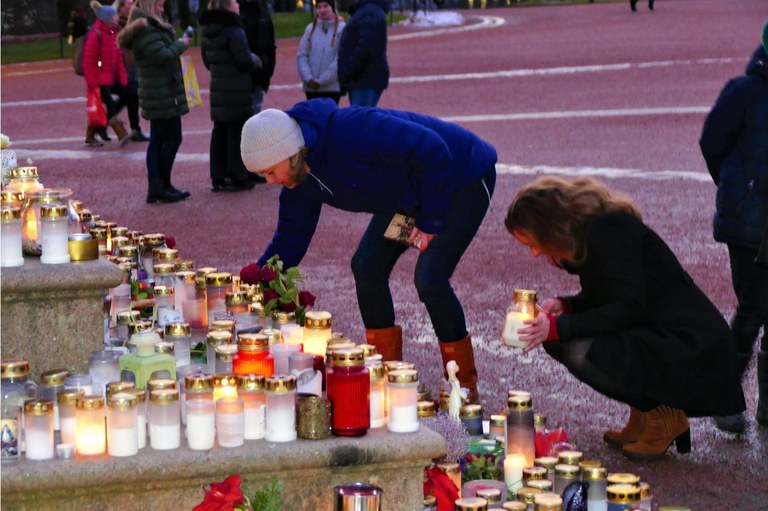 Two Oslo women light a candle for Ari Behn in the Palace Square.
Two Oslo women light a candle for Ari Behn in the Palace Square.
Suicides have an effect on more than loved ones, families and friends. When someone throws themselves in front of a train, the train driver is also affected. If it happens on a busy platform, many other travellers might also witness the tragedy.
“It is very shocking for the victim's family and others who are close to them when someone takes their own life. It is also deeply traumatic for train drivers, those who are standing nearby and for those who are involved afterwards, when someone takes their own life in front of a train,” the authors of the proposal write.
Rail suicides are only a small part of the total number. In Sweden, they represent approximately 5%.
Platform barriers are efficient
Putting up obstacles near railway tracks and on platforms is an efficient way of reducing the number of rail suicides.
Platform barriers only open when a train has come to a full stop by the platform, and the train doors line up with the barrier doors. That makes it impossible for anyone to throw themselves in front of the train, as long as the barrier is high enough.
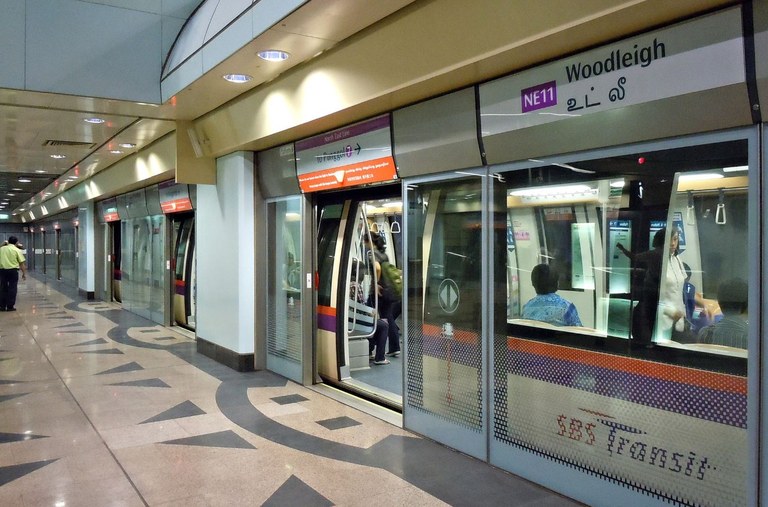
The Woodleigh stop at North East MRT line in Singapore. The platform doors only open when the train has come to a full stop. This prevents any travellers from falling or jumping in front of the train. It also allows the train to approach at a higher speed. Photo: Seloloving, Wikipedia.
A Chinese study covering 2008 to 2017 showed the number of suicides at metro stations fell by 91% when barriers, or platform screen doors (PSD), were installed.
In South Korea, suicide rates fell by 89% at 121 Metro stations in Seoul between 2003 and 2012. Because some of the platform barriers were not full-height, it was still possible to climb over them. The study concluded that full-height screen doors could completely eliminate subway suicides.
The first platform screen doors were installed on the Singapore Mass Rapid Transit (SMRS) as early as in 1987. Statistics from Metrobits.org shows that 87 metro systems around the world now have platform barriers. Only 18 are found outside of Asia.
One of the reasons why the barriers were first introduced in Asia is that train and metro systems there are often very crowded. This increases the risk for someone to be accidentally pushed off the platform and onto the tracks. In China, all railway stations are obliged to install platform barriers.
Copenhagen leading the way
Copenhagen’s Metro is one of the systems in Europe that has installed platform screen doors in all underground stations. The company which constructed and runs the Copenhagen Metro system does not talk about suicides as a principle, however.
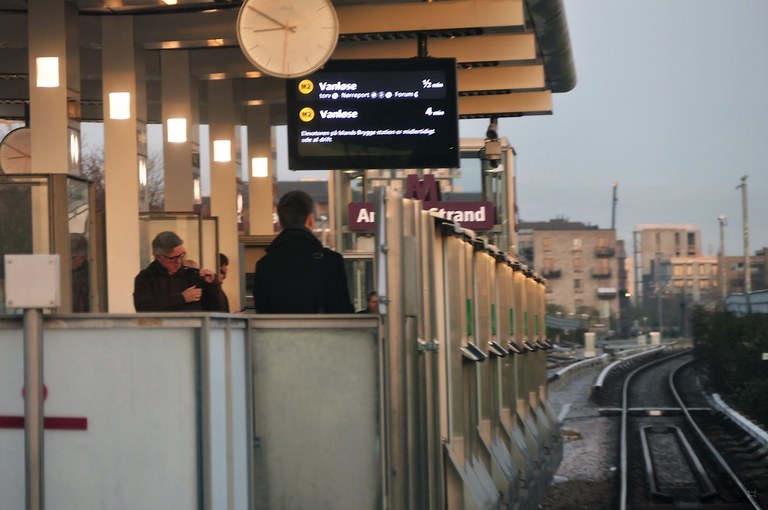 All Copenhagen’s underground metro stations have platform screen doors. There are also barriers where the tracks run overground, like in Amagerstrand. The barrier is not as high, however, and it is possible to scale it.
All Copenhagen’s underground metro stations have platform screen doors. There are also barriers where the tracks run overground, like in Amagerstrand. The barrier is not as high, however, and it is possible to scale it.
Existing statistics show that 31 people committed suicide on Danish railways in 2018. Copenhagen’s Metro and commuter trains – the so-called S-togsnettet – are included in this. That was six more suicides than the year before, according to a safety report from the Danish Transport, Construction and Housing Authority.
Between 2000 and 2015, a total of 232 people killed themselves on railways, according to the report “Suicides and attempted suicides on the tracks”, compiled by Centre for Suicide Research, on commission from Danish Railways DSB.
THE NUMBER OF SUICIDES ON DANISH RAILWAYS AND METRO LINES

Oslo’s Sporveien, which is responsible for the metro network, register approximately two suicide on the network each year.
“Sporveien always puts safety first. Our measures to prevent suicides on the metro is part of the general metro safety work. We have security guards in station areas, alert and trained drivers, CCTV, an emergency number and various measures aimed at securing tracks in more exposed areas,” says Terje Sandhalla, Sporveien’s head of security.
The Stockholm metro provides the most openness around suicides, where annual statistics not only show suicides but also those who survived but were injured.
“Our safety central operates 4,500 cameras across the metro and commuter train stations, and can follow what is going on in real-time on platforms, in waiting areas and other spaces. The safety operators, like the traffic staff – train drivers, station officers and security guards – are trained to be able to identify people who display ‘suicidal’ or other unusual behaviour,” says Claes Keisu, press officer at Region Stockholm’s department for public transport.
“In 2019, 239 suspected suicidal people were caught in the subway thanks to the reactions from personnel or fellow travellers. In 2018 they prevented 194 suspected suicidal persons.
Two newbuilt commuter train stations have been equipped with platform barriers – Stockholm City and Stockholm Odenplan.
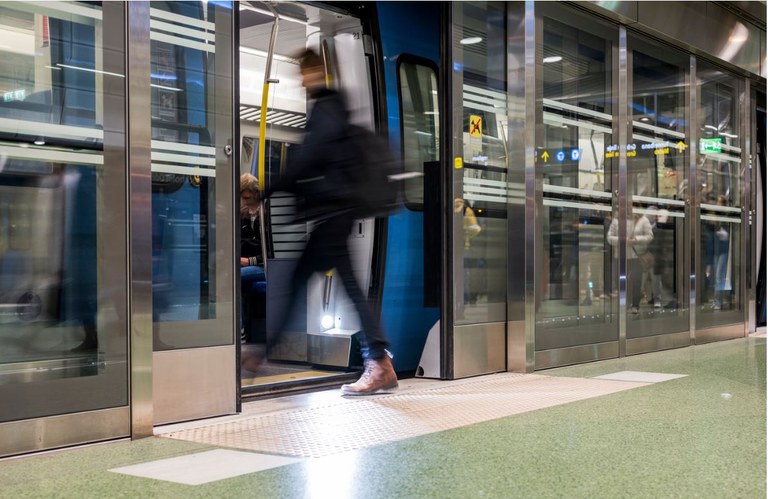
The newbuilt Stockholm Odenplan commuter station has been equipped with platform barriers. Photo: Gustav Kaiser.
“Those stations have not seen any deaths at all. We also have a project to build platform barriers in a metro station. The problem is that our metro system has several different types of trains with varying distances between doors,” says Claes Keisu.
All the 129 commuter trains are identical, so platform barriers work well at commuter train platforms. The metro has a further problem – certain platforms are curved, which means barriers would have to be tailor-made.
In the subway there is an additional problem. Most of the stations were built 70 years ago. Many stations are outdoor and many platforms are curved. It is technically difficult to build new technology in existing environments and it is a challenge to find solutions for platforms that are curved.
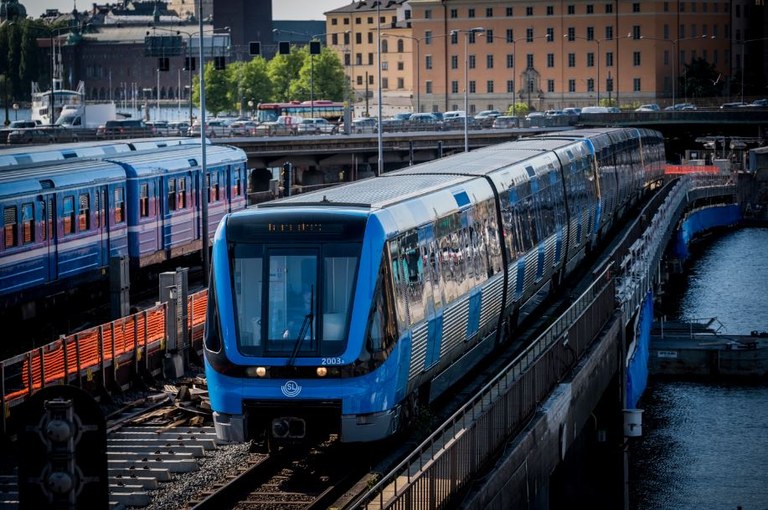
The Stockholm metro (above) has nearly 1.3 million travellers in a 24 hour period. Commuter trains have around 400,000. Photo: Gustav Kaiser.
- In Stockholm the metro is being expanded with new lines and 15 stations. Those are being prepared for platform doors to be installed.
In the winter of 2014/2015, there was a small-scale trial of three different types of platform doors at the Åkeshov metro station.
“We will run a full-scale test at the Bagarmossens metro station in 2021. The estimated cost is 101 million kronor (€ 9.5m) and the procurement process starts this year,” says Claes Keisu.
Marie Preisler has provided information for this article.
- Driverless trains
-
The Copenhagen Metro runs driver-less trains, where passengers can sit at the very front. The driverless system means safety must be extra high.
- Nordic vision
-
The Nordic Council Welfare Committee has decide to:
- strive to reduce the suicide rate in the Nordic countries by 25% by 2025
- strive to prevent all suicide by train by 2025
- strive to prevent all suicide by certain vulnerable group
“We live in the happiest region in the world, and yet young people commit suicide and vulnerable people find life difficult. The Nordic Council Welfare Committee wants to do something about the number of people who take their own lives,” the chair of the committee, Bente Stein Mathisen, said afterthe committee met January 28, in Copenhagen.
 Follow us on Facebook
Follow us on Facebook
